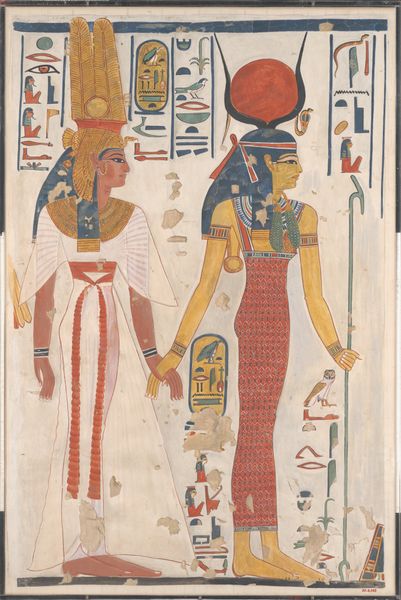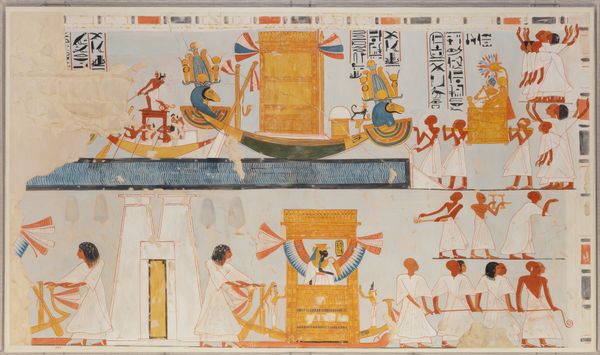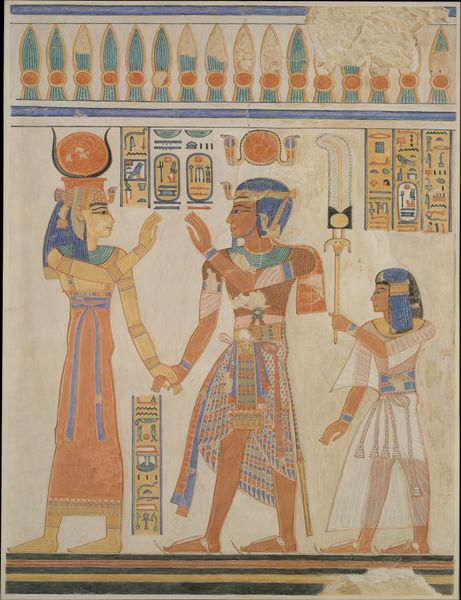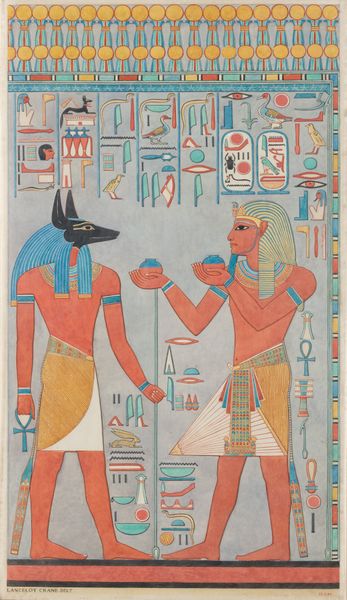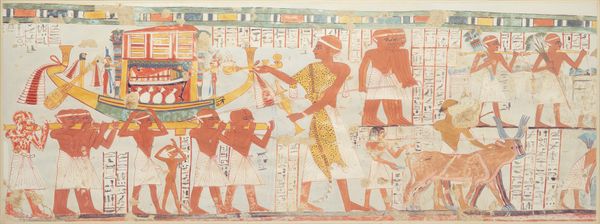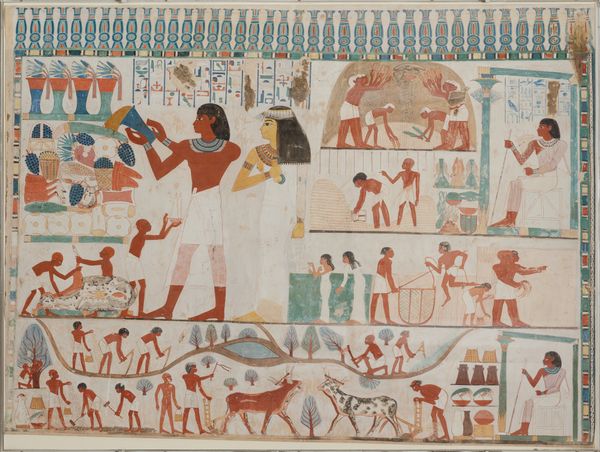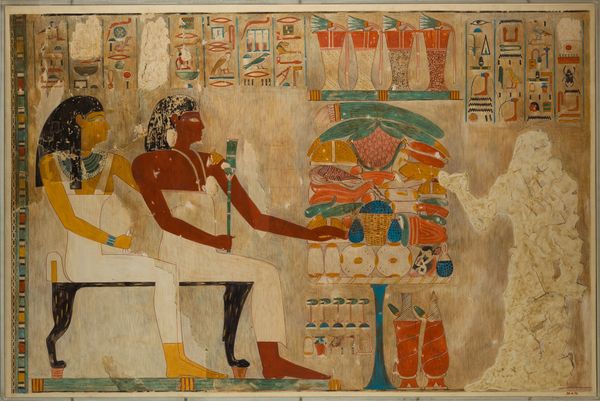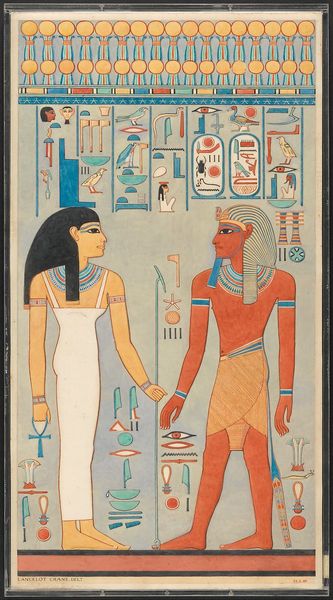
Darius I Offering to Amun, Temple of Amun at Hibis 521 BC
0:00
0:00
painting, fresco, watercolor
#
water colours
#
painting
#
ancient-egyptian-art
#
figuration
#
fresco
#
watercolor
#
egypt
#
ancient-mediterranean
#
line
#
wall painting
#
history-painting
#
watercolor
Dimensions: facsimile: h. 52 cm (20 1/2 in); w. 37.5 cm (14 3/4 in); scale about 1:8; framed: h. 55.2 cm (21 3/4 in); w. 40 cm (15 3/4 in)
Copyright: Public Domain
Curator: Standing before us is a watercolor on paper study of a fresco from the Temple of Amun at Hibis, representing Darius I offering to the deity Amun, created around 521 BC. Editor: The first thing that strikes me is the linear precision despite the surviving damage. The use of line to define these divine figures feels both delicate and powerful. Curator: It’s remarkable how Darius, a Persian ruler, is depicted engaging in Egyptian religious practice. This reflects a fascinating period of cultural negotiation and the use of imagery to legitimize rule in a conquered territory. It shows Darius, who claimed his right to rule over Egypt came from the god. Editor: And look at the offering itself – those twin papyrus-like forms. I think about the ancient Egyptian belief system. The image symbolizes new life, perhaps conveying the message that Darius is offering renewed vitality to the land, through Amun’s authority. Curator: Precisely. This scene also provides valuable insight into the Temple of Amun’s function within the socio-political context of the time, during the late period in Egypt. The offering shows both religious syncretism, and how rulers co-opted artistic styles to portray their legacy. Editor: Notice the use of blue on Amun, representing the celestial and the divine, it really emphasizes his otherworldly power, setting him apart. The entire mural is so full of symbolic choices. And how Darius appears in an obedient posture, showing an incredible example of political self-representation through art. Curator: Absolutely, we can interpret this artwork as both a symbol of religious piety and political strategy, created within a very particular historical context of empire building and cultural exchange. It provides an intimate and powerful perspective of this important moment. Editor: I see in these ancient images and symbols not just a depiction of a historical moment, but an enduring message about power, reverence, and the negotiation of cultural identities across time. I can keep looking at it for a long time.
Comments
No comments
Be the first to comment and join the conversation on the ultimate creative platform.
